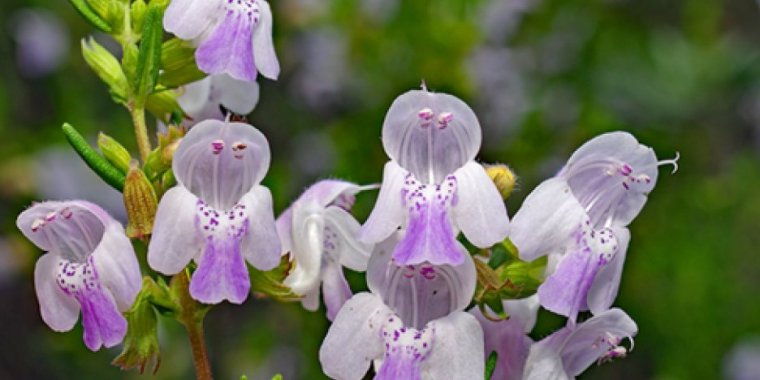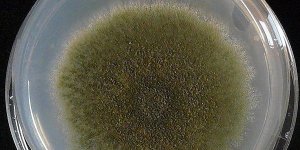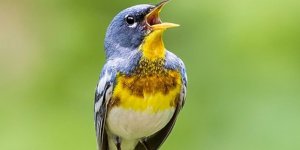| News / Science News |
Florida scrub mints radiated as peninsula sank and resurfaced during ice ages
During the ice ages of the Pleistocene, the Florida Peninsula regularly grew to twice its current size as glaciers expanded near the planet's poles, only to be reduced to a series of islands as melting ice returned to the sea during warm periods. All told, glaciers advanced and retreated 17 times, and, according to a study, the resulting environmental instability may have contributed to the incredible plant diversity found in Florida today.

Scrub mint flowers are a nectar source for various pollinators, including native bees and butterflies. Photo: Floyd Griffith
Researchers at the Florida Museum of Natural History came to this conclusion while studying scrub mints, a unique group of plants endemic to the southeastern U.S. that radiated during the ice ages.
Cyclically marooned on isolated islands as seas rose and fell, scrub mint populations became genetically isolated and diverged over time, generating multiple new species.
Despite their long winning streak, scrub mints have recently been hit head-on with the threat of extinction due to human-mediated habitat destruction and impending climate change. Of the 13 species endemic to Florida, eight are listed as either state or federally endangered.
"The most remarkable thing about this group is how rare they are," said lead author Andre Naranjo. "One species, Conradina etonia, only grows within a 30-square mile area, and if you were to pave over that, that'd be it. The species would be gone."
Other scrub mints share a similar pattern. Lakela's mint (Dicerandra immaculata) has been reduced to just a single population, most of which is located on privately owned lands.
Scrub balm (Dicerandra frutescens) is restricted to Highlands County, Florida, where it grows along a ridge increasingly checkered by development.
Further west, the Apalachicola rosemary (Conradina glabra) has been reduced to just ten known locations in a single region of the Florida Panhandle.
Nearly 4 million years ago, a scrub mint species growing in the Apalachicola River Basin of Florida shed a fine layer of seeds on the sandy soil below.
Each no larger than a coarse grain of sand, the seeds don't often travel far, which researchers suspect is a major cause of their rarity.
Scrub mints are just one example of unique Florida plants that originated in the peninsula that are now imperiled due to habitat destruction, fire suppression and competition with invasive species. (U.S. National Science Foundation)
YOU MAY ALSO LIKE





